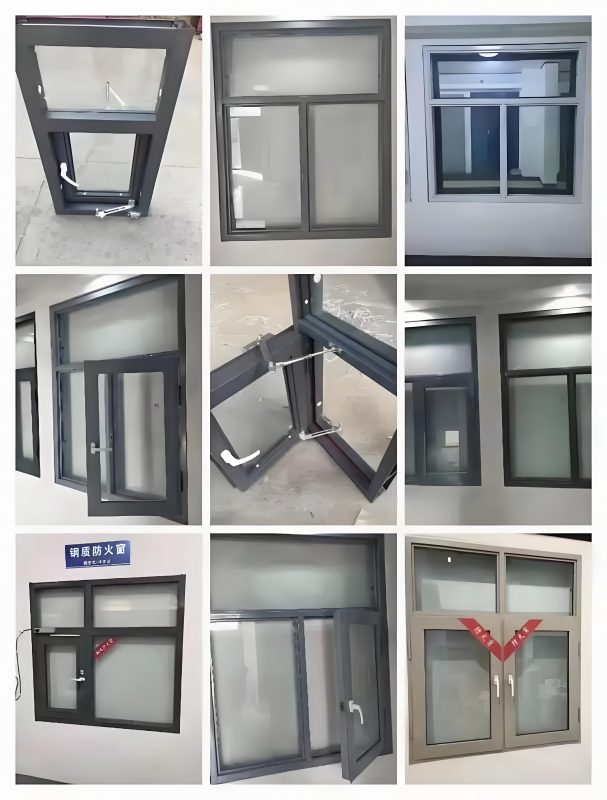
Development and Types of Fire-Resistant Glass in Architecture
With the continuous development of China’s economy and society, and the improvement of people’s living standards, the demand for glass safety performance in construction has significantly increased. Fire-resistant glass plays a crucial role in controlling the spread of fire and smoke during a building fire, thereby minimizing damage and ensuring the safety of lives and property.
The production and application of fire-resistant glass in architecture originated in the 1970s in the UK and was subsequently produced and used extensively in Europe and the United States. Leading brands in the fire-resistant glass industry include Pilkington, Saint-Gobain, Asahi Glass, and Schott. In Europe, 80% of the fire-resistant glass market requires insulated fire-resistant glass, with an annual demand of approximately 600,000 to 800,000 cubic meters.
China began producing fire-resistant glass around the 1980s, initially for observation windows in fire doors. Over the years, the product range has expanded to include both insulated and non-insulated fire-resistant glass, as well as single and compound (laminated) fire-resistant glass, catering to a wide range of applications in different architectural markets.
Types of Fire-Resistant Glass
Fire-resistant glass, as defined by GB15763.1-2009, is a special type of glass that meets specific fire resistance requirements under standard fire test conditions. It can be categorized into insulated (Class A) and non-insulated (Class C) types based on its fire resistance performance. Insulated fire-resistant glass meets both integrity and insulation criteria, while non-insulated fire-resistant glass only meets integrity criteria.
Structurally, fire-resistant glass is divided into single and compound types. Single fire-resistant glass consists of a single layer that meets specific fire resistance requirements and is classified as Class C, including varieties such as high-strength, borosilicate, microcrystalline, aluminosilicate, and wire-reinforced glass.
Compound fire-resistant glass is made from two or more layers of glass or a combination of glass and organic materials, meeting specific fire resistance requirements. It can be either Class A, meeting both integrity and insulation requirements, or Class C, meeting only integrity requirements. Types include organic interlayer, inorganic laminate, and inorganic cast glass.
Fire-Resistant Glass—-Performance Requirements and Standards
Fire-resistant glass must meet certain performance criteria, including fire integrity, insulation, and a specified fire resistance duration under standard test conditions. The standards governing the use of fire-resistant glass in construction include the “Code for Fire Protection Design of Buildings” (GB50016-2014, 2018 edition) and specific standards for fire-resistant glass and fire windows.
fire glass door – Yunnan Guang Dun fire doors and Windows (yunngd.com)
Fire window归档 – Yunnan Guang Dun fire doors and Windows (yunngd.com)
Application and Development in China
Initially, high-strength single fire-resistant glass and borosilicate fire-resistant glass were developed for their excellent fire resistance properties. However, the high cost of borosilicate glass limited its use to test samples. With advancements in production technology and cost reduction, borosilicate fire-resistant glass is gaining market acceptance and is widely used in fire windows, architectural curtain walls, smoke barriers, skylights, and fireproof floors.
Compound fire-resistant glass, particularly inorganic laminated types, is recognized for its superior fire resistance and insulation properties, making it suitable for fire-resistant partitions, floors, skylights, fire doors, and escape routes in buildings.
Challenges and Future Directions
The Chinese fire-resistant glass industry faces challenges such as insufficient awareness of the performance and quality of fire-resistant glass and issues related to installation. The future development will focus on improving the production technology of borosilicate fire-resistant glass, developing large-scale insulated compound fire-resistant glass, and exploring innovative shapes and colored fire-resistant glass options to meet diverse architectural needs.
With the implementation of new national fire protection regulations and changes in fire management systems, the demand for high-performance, lightweight, and cost-effective fire-resistant glass is expected to grow rapidly, playing a vital role in ensuring the safety of high-rise buildings and densely populated areas.
